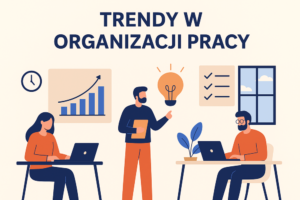Quantum Computing: From Hype to Strategic Reality
For years, quantum computing has been framed as a futuristic concept — powerful, mysterious, and perpetually “five years away”. Today, that narrative is shifting. Google has announced the first-ever verifiable quantum advantage, powered by its new superconducting quantum chip, Willow. This milestone marks a transition from speculative research to demonstrated capability, raising critical questions for enterprises, investors and governments: Who will lead in the post-classical computing era? What competitive gains will quantum systems unlock? And how soon will this disruption reach commercial scale?
Willow: A New Benchmark in Quantum System Performance
At the heart of this breakthrough lies Willow, a 105-qubit superconducting quantum chip engineered for performance, precision, and scalability. Built on nearly four decades of research in superconducting qubits — often referred to as “artificial atoms” — Willow represents a leap in system reliability. It achieves gate fidelities of 99.97% for single-qubit operations and 99.88% for entangling gates, operating at speeds measured in tens to hundreds of nanoseconds.
Willow enabled Google to run the Quantum Echoes algorithm — a complex computational task involving reversing quantum states, generating large-scale quantum interference and entanglement, and collecting more than one trillion measurements. This result could not be practically reproduced on classical supercomputers, placing the outcome firmly in the domain of verifiable quantum advantage.
Why Verifiable Quantum Advantage Matters for Industry
Previous claims of “quantum supremacy” faced criticism due to lack of real-world applicability or the inability to independently validate results. In contrast, verifiable quantum advantage refers to a quantum computation that is both infeasible for classical machines and provably correct through mathematical verification.
This milestone signals three key developments:
- Quantum hardware is maturing towards predictable performance
- Algorithms are transitioning from experimental novelty to strategic use cases
- Enterprises now require a quantum adoption roadmap earlier than expected
UK industries — particularly those operating in pharmaceuticals, financial risk modelling, logistics optimisation and energy materials — must now assess their readiness for a post-classical computing paradigm.
Engineering the Quantum Engine: Why Willow Stands Out
From a technical standpoint, Willow’s success stems from two core strengths:
1. Superconducting qubits with below-threshold error correction
Google has demonstrated that as the number of qubits scales up, the system’s error rate decreases — reversing a long-standing limitation in quantum hardware.
2. High-velocity data processing
The system performed millions of Quantum Echoes measurements in seconds, contributing to over a trillion total runs — one of the largest experimental datasets in quantum history.
3. Compatibility with emerging fault-tolerant architectures
Google’s quantum roadmap targets the creation of a long-lived logical qubit as the next milestone, a critical component of fully fault-tolerant quantum computing.
From Breakthrough to Business Case: Strategic Implications for Enterprises
Quantum-compatible industries are already preparing for impact:
| Sector | Strategic Benefit |
|---|---|
| Pharmaceuticals | Faster molecular simulations for drug discovery |
| Energy & Fusion | Optimised quantum simulations for reactor materials |
| Automotive & EV | Advanced battery chemistry modelling |
| Finance | Ultra-fast optimisation and risk modelling |
| Logistics | Post-classical route and cargo distribution optimisation |
| Cybersecurity | Need for quantum-resistant encryption standards |
The Competitive Race: Global and UK Positioning
The global quantum race is intensifying. The US leads with Google, IBM and Microsoft at the helm, while China rapidly scales national quantum investment. Germany, France and the Netherlands are building specialised quantum industrial clusters.
The UK, meanwhile, has committed over £2.5bn as part of its National Quantum Strategy and established the National Quantum Computing Centre (NQCC) in Harwell, Oxfordshire. The country is home to more than 50 quantum companies, attracting over £800m in private investment and fostering academic-commercial partnerships at institutions such as Oxford, UCL and Imperial College London.
With Google Willow validating superconducting quantum architectures, UK policymakers and corporate leaders now face two critical strategic questions:
- Should UK enterprises actively prepare for quantum integration instead of waiting for turnkey solutions?
- Do national research efforts align effectively with commercially scalable hardware platforms?
Challenges on the Road to Fault-Tolerant Quantum Computing
Despite the breakthrough, significant obstacles remain:
- Error correction scaling: Achieving practical fault tolerance requires millions of high-fidelity qubits.
- Cryogenic infrastructure: Willow requires ultra-low temperatures near absolute zero.
- Development cost: Building commercial-grade quantum systems will demand billions in R&D.
- Talent gap: UK enterprises face a scarcity of quantum engineers and hybrid classical-quantum software experts.
- Security transition: Encryption standards must rapidly shift towards post-quantum cybersecurity resilience.
Professor Alan Woodward of the University of Surrey cautions against overselling a single benchmark, noting that the tested problem set was optimised for quantum execution rather than universal workload performance. Nonetheless, he describes Willow as “encouraging for everyone striving to build a practical quantum computer.”
Google’s Roadmap and the Path to Large-Scale Quantum Deployment
Google’s Quantum AI division has followed a structured roadmap:
| Milestone | Achievement | Year |
|---|---|---|
| Milestone 1 | Beyond-classical computation | 2019 |
| Milestone 2 | Quantum error correction prototype | 2023 |
| Milestone 3 | Below-threshold quantum error correction with Willow | 2024 |
| Milestone 4 | Long-lived logical qubit (in progress) | Expected mid-decade |
Once logical qubits are created and scaled, commercial-grade quantum processors could enter enterprise test environments by the late 2020s.
The Coming Quantum Strategy Imperative for UK Businesses
In an emerging quantum economy, three types of companies will emerge:
- Quantum-ready innovators — early adopters leveraging hybrid quantum-classical workflows
- Late movers — reacting once competitors demonstrate ROI
- Digital laggards — unprepared for shifts in simulation-driven innovation
For UK companies, especially in energy, finance, logistics and advanced manufacturing, the time to begin quantum literacy, talent integration and early-stage piloting is now.
Conclusion: Willow as the Dawn of Post-Classical Computing
Willow doesn’t solve today’s commercial problems — yet. But it confirms, for the first time, that quantum machines can outperform classical systems in a verifiable, measurable way. This milestone transforms quantum computing from a speculative horizon into a defined strategic trajectory.
For UK enterprises, governments and investors, the question is no longer if quantum technology will reshape competitive landscapes — but who will be ready to harness it first.










